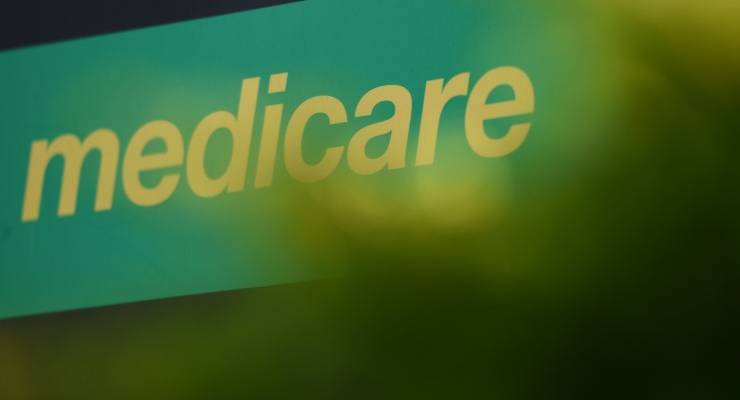
One chapter of the book Catch-22 describes a hospitalised solider, catatonic and bandaged head to toe, connected to two jars — one dripping fluid in, the other collecting urine from another tube. The jars are diligently changed every nursing shift, but the soldier doesn’t get better, prompting another soldier to ask: why don’t they just connect the jars and cut out the middleman?
That is a fairly apt description of the current state of bulk-billing in Australia. Underfunding and an outdated system have conditioned doctors to prioritise revenue at the expense of quality care, the patient relegated to the role of middleman. However, the alternative to bulk-billing is gap fees, a budgetary four-letter word.
Bulk-billing is a shaky foundation to build a socialised health system on, since it relies on contractors and business owners being willing to accept reduced payment to provide a no-gap service to patients and individually prop up said health system.
This shakiness accelerated to a crumble when Medicare rebate indexation was frozen, initially by the Gillard government in 2013 and perpetuated by the Coalition until 2019.
During that period, doctors, corporates and small practice owners had to get creative if they wanted to continue bulk-billing. This creativity initially took the form of shorter consultation times, churning through them to maintain revenue while still providing a no-gap service.
Then doctors started looking to underutilised items in the Medicare Benefits Schedule (MBS) that they could co-bill with standard consultation items. Some of these habits are entirely legitimate, for example the additional processing of a mental health consultation with a standard consultation, pending the content and duration of the visit.
There are unethical forms of “creative billing” such as clinics processing inappropriate chronic disease management (CDM) items. The CDM items attract a large rebate and ostensibly provide funding for a practice to provide comprehensive care to regular patients with chronic disease. Bulk-billing practices began using these items inappropriately for casual and even new patients.
As the crumble became a full collapse, medical education providers started running courses to teach practices how to game the MBS to maximise revenue, and software developers created tools that could analyse a patient’s Medicare history, spitting out a buffet of eligible rebates to be claimed.
However, standards of care can be diluted and corrupted only so much, and bulk-billing clinics had no choice but to introduce gap fees, which is where we are now.
The tripling of bulk-billing incentives will indeed help those who most need cheap medical care by targeting children, pensioners and concession card holders. But deep in the budget papers lurks the intent of the government to (correctly) shore up the MBS to stop methods of billing that, despite being wasteful and unethical, businesses have come to rely on.
The criteria for claiming certain items and co-billing will be tightened and we will see the introduction of MyMedicare, the latest iteration of blended funding. MyMedicare encourages patients to register with a single practice to provide comprehensive care and would in time replace the current CDM items. This is endorsed by the AMA and RACGP as it is a more efficient means of chronic disease management than sporadic, fee-for-service visits.
The other goal of blended funding is to rort-proof the MBS — again, the correct thing to do but which presents a threat to the bulk-billing business model if practices have become too reliant on “creative” revenue.
Ultimately it is impossible for the government to balance the priorities of quality care and universal bulk- billing since they are anathema to one another, a stalemate that will be resolved only by sweeping Medicare reform.
So although the newly tripled bulk-billing incentives are a bandaid, it is a very welcome bandaid that Labor has placed with surgical precision.








I attend a non bulk billing practice and generally pay the full fee upfront and then receive an electronic payment of the Medicare rebate (usually less than half of the fee) to my bank account. I suppose this method falls under the heading of “creative billing” but clearly the current Medicare rebate is uneconomic and has been so for a long time. It will be interesting to see how the changes play out.
I don’t think I’ve ever had a bulk-billing doctor. They are thin on the ground here.
The amount the doctors charge seems to go up each time I visit, and is now nearly $100.
not the doctors – they are contractors and like a parasite the multinational is sub contracting the service and clearly makin a lotta bucks to administer – more middle men is where all our resouces, capital and money and power are leaking
I had a GP who bulk billed when I was a student. Then it was a small fee with any recommended subsequent related appointment being bulk billed. It’s a bit ridiculous to ask GPs to be small business owners and also provide no or low cost care. No wonder chains vacuum them up.
“ The jars are diligently changed every nursing shift”
Nope. Not quite. They just swapped the jars over.
Is it just me or is every one of the last few budgets middling to fair without any serious initiatives designed to introduce structural reform in some of these areas?
Both parties trying to please everyone is the underlying reason, I suspect, combined with the short term thinking encouraged by the short electoral cycle. Maybe the current government will gain the confidence to do this if the previous one remains in the doldrums in the medium to long term?
vote Greens or a smart independant change will come
Lets not equate govt handing increased funding to multinational health businesses who advertise on their corp sites for existent owner /GPS to sell em their existing practices – or the NDIS profiteers ( often the same players ) They will only increase their cut and scouge service delivery – ie pay pittence to new GPS coming from lower standard under graduate degrees – competing with the relatively Australian higher medical qualified- top tier university local graduates competing for a share of the market via our domestic medicare dollar
Yep privatisation of what should be a completely govt run service adds squillions to the overheads and give profits to rent seekers, whereas “inefficient” tho they might be, govt depts used to be staffed with normally paid people who do an honest job, and deliver the service adequately. The neolib drive to privatise because of increased efficiency and lower cost has proven now to be a total lie. as a disabled person myself, I find it near impossible to navigate through the system to get services, when in the old days they were just provided as necessary – the cost would have been a fraction of what it is now. I think Howard started all this and in the couple of times Labor has been in office they have done nothing about it . . .
its the corporatisation of public services – – making profits over care – people and democracy for sale!